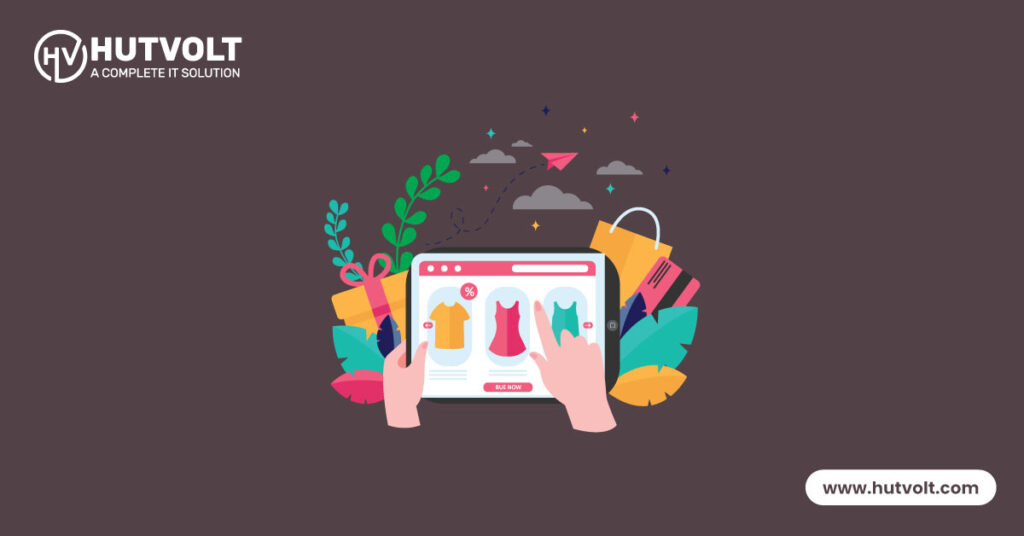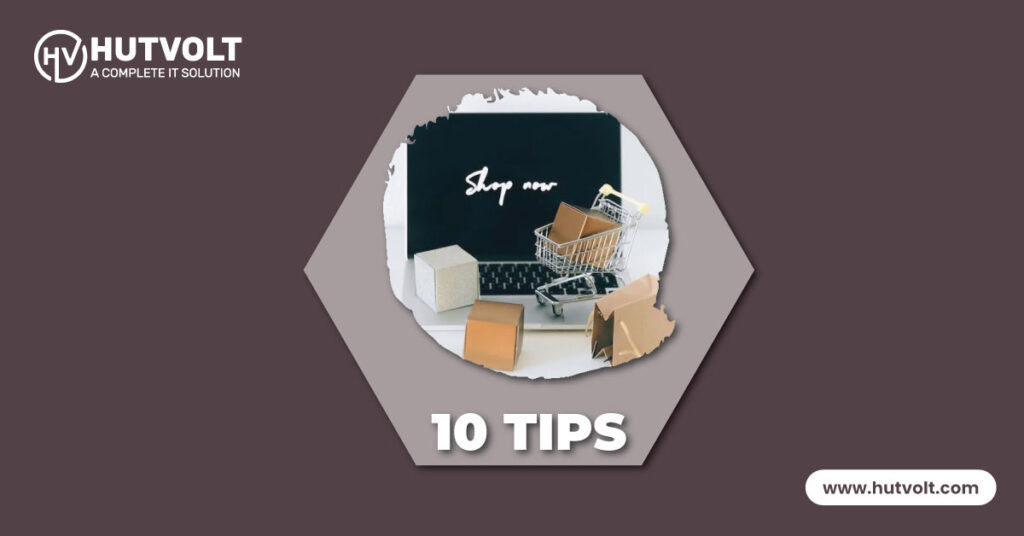In today’s digital age, e-commerce marketing has become an essential component of any successful fashion business. E-commerce marketing refers to the practice of using digital channels to promote and sell products and services online. The importance of e-commerce marketing cannot be overstated, especially in the fashion industry, where trends and styles are constantly changing, and competition is fierce.
Fashion businesses must adopt effective e-commerce marketing strategies to attract and retain customers, increase sales, and build brand awareness. In this article, we’ll explore some of the best practices for optimizing your e-commerce marketing efforts to help you succeed in the fashion industry. So, let’s dive in!
Know Your Target Audience
One of the most important factors in successful e-commerce marketing for fashion businesses is knowing your target audience. Your target audience consists of the people who are most likely to be interested in and purchase your products. Understanding your target audience will allow you to tailor your marketing efforts to their preferences and needs, leading to higher engagement and more conversions.
To identify your target audience, start by defining your ideal customer. Consider factors such as age, gender, income, location, and interests. You can also conduct market research and analyze your existing customer base to gather insights about their characteristics and behavior.
Once you have a clear understanding of your target audience, you can create targeted marketing campaigns that speak directly to their interests and needs. This will not only increase the effectiveness of your marketing efforts but also help you build a loyal customer base that is more likely to engage with your brand and make repeat purchases.
Create a Strong Brand Image
In the highly competitive fashion industry, having a strong brand image is crucial for standing out from the crowd and attracting customers. Your brand image is the perception that customers have of your brand, including your values, personality, and style. Creating a strong brand image is essential for building trust and credibility with your audience, which can lead to increased sales and customer loyalty.
To create a strong brand image, start by defining your brand values and personality. Consider what makes your brand unique and how you want your customers to perceive your brand. Then, use consistent messaging and branding across all channels, including your website, social media, and marketing campaigns. Use visual elements such as color, typography, and imagery to create a cohesive brand identity that is easily recognizable and memorable.
Another important aspect of creating a strong brand image is to ensure that your brand aligns with your target audience’s values and preferences. This can be achieved through market research and customer feedback, which can help you tailor your messaging and branding to better resonate with your audience.
Optimize Your Website
Your website is the backbone of your e-commerce business, serving as the primary point of contact between you and your customers. Therefore, having an optimized website is crucial for providing a seamless customer experience and driving sales.
An optimized website should be easy to navigate, visually appealing, and optimized for search engines. This means having a clear layout and navigation, high-quality images, and relevant product descriptions. Additionally, ensuring that your website is mobile-friendly and has fast loading times is essential for providing a positive user experience.
Another critical aspect of website optimization is search engine optimization (SEO). SEO refers to the practice of optimizing your website to rank higher in search engine results pages (SERPs), leading to increased visibility and traffic. To optimize your website for SEO, conduct keyword research and incorporate relevant keywords throughout your website, including in your product descriptions, meta tags, and URLs.
Lastly, it’s essential to ensure that your website has a secure checkout process to protect your customers’ personal and payment information. This can be achieved through implementing SSL encryption and using trusted payment gateways.
Leverage Social Media
Social media has become an integral part of e-commerce marketing, providing a platform for businesses to connect with their audience, promote their products, and build brand awareness. With billions of users worldwide, social media is a powerful tool for reaching a wide audience and driving sales.
To leverage social media for your e-commerce marketing efforts, start by identifying the platforms that are most relevant to your target audience. For example, Instagram and Pinterest are popular platforms for fashion businesses due to their visual nature, while Twitter and LinkedIn may be more suitable for B2B businesses.
Once you’ve identified the platforms to focus on, create a content strategy that aligns with your brand image and target audience. This can include a mix of product promotions, behind-the-scenes content, user-generated content, and educational or informative posts.
Social media is also an excellent platform for engaging with your audience and building a community around your brand. Respond to comments and messages promptly, and consider running contests or giveaways to incentivize engagement.
Implement Email Marketing
Email marketing is a highly effective strategy for driving sales and building customer loyalty in e-commerce businesses. Email marketing allows businesses to communicate directly with their customers, delivering targeted and personalized messages that can drive conversions and increase customer lifetime value.
To implement email marketing effectively, start by building an email list of subscribers who have opted in to receive marketing messages from your brand. This can be achieved through website opt-ins, social media promotions, or in-store sign-ups.
Once you’ve built your email list, develop a content strategy that includes a mix of promotional and non-promotional messages. This can include new product announcements, exclusive promotions for subscribers, educational or informative content, and personalized product recommendations based on past purchases.
Another essential aspect of email marketing is segmentation, which allows you to deliver targeted messages to specific groups of customers based on factors such as demographics, purchase history, and engagement level. By segmenting your email list and delivering relevant messages to each group, you can increase the effectiveness of your email marketing campaigns and drive higher conversion rates.
Use Influencer Marketing
Influencer marketing has become a popular strategy for fashion e-commerce businesses to increase brand awareness and drive sales. Influencer marketing involves partnering with social media influencers who have a large and engaged following, to promote your products and brand to their audience.
Influencer marketing is important in fashion e-commerce because it allows businesses to tap into the influencer’s audience and leverage their influence and credibility to promote their brand. Influencers can provide a unique perspective on your products, creating engaging and informative content that resonates with their audience.
To use influencer marketing effectively, start by identifying influencers who align with your brand image and target audience. This can involve researching influencers in your niche, using influencer discovery tools, or working with influencer agencies.
Once you’ve identified potential influencers, reach out to them with a proposal for a collaboration or partnership. This can involve providing free products in exchange for a review or featuring your products in their content. Alternatively, you can pay influencers to promote your products through sponsored content.
When working with influencers, it’s important to provide clear guidelines and expectations for the collaboration, including the type of content required, messaging, and timeline. It’s also important to measure the effectiveness of your influencer marketing campaigns through metrics such as engagement rates, reach, and conversions.
Measure Your Success
Measuring the success of your e-commerce marketing efforts is essential to understand the effectiveness of your strategies and make data-driven decisions to optimize your campaigns. Measuring success can help you identify what is working and what can be improved, allowing you to optimize your marketing efforts and drive better results.
Some key performance indicators (KPIs) to track in e-commerce marketing include website traffic, conversion rates, customer acquisition cost, customer lifetime value, and return on investment (ROI). These metrics can provide valuable insights into the performance of your marketing campaigns and help you identify areas for improvement.
To measure the success of your e-commerce marketing efforts, you can use a variety of tools such as Google Analytics, social media analytics tools, email marketing platforms, and e-commerce platforms. These tools provide detailed metrics and insights into the performance of your marketing campaigns, allowing you to track and analyze the effectiveness of your strategies and make data-driven decisions to optimize your campaigns.
It’s important to regularly review your metrics and KPIs and use this data to optimize your marketing campaigns. This can involve making adjustments to your website, refining your social media strategy, optimizing your email marketing campaigns, or adjusting your influencer marketing approach.
By measuring the success of your e-commerce marketing efforts and making data-driven decisions, you can optimize your campaigns and drive better results, ultimately contributing to the success of your fashion e-commerce business.
In conclusion, e-commerce marketing is an essential strategy for fashion businesses looking to drive sales and grow their brand online. By knowing your target audience, creating a strong brand image, optimizing your website, leveraging social media, implementing email marketing, using influencer marketing, and measuring your success, you can optimize your e-commerce marketing efforts and drive better results.
Identifying your target audience and creating a strong brand image is essential for building a loyal customer base, while optimizing your website and leveraging social media can help you reach new audiences and drive more traffic to your online store. Implementing email marketing and using influencer marketing can help you build relationships with your customers and increase brand awareness, while measuring your success is essential for making data-driven decisions and optimizing your campaigns.
Looking to the future, e-commerce marketing is likely to continue to evolve, with new technologies and strategies emerging to help businesses reach and engage with their target audience. By staying up-to-date with the latest trends and best practices in e-commerce marketing, fashion businesses can stay ahead of the competition and drive long-term success.



Itís nearly impossible to find educated people for this subject, but you sound like you know what youíre talking about! Thanks
Good post. I learn something totally new and challenging on blogs I stumbleupon on a daily basis. Its always useful to read content from other authors and practice something from their websites.